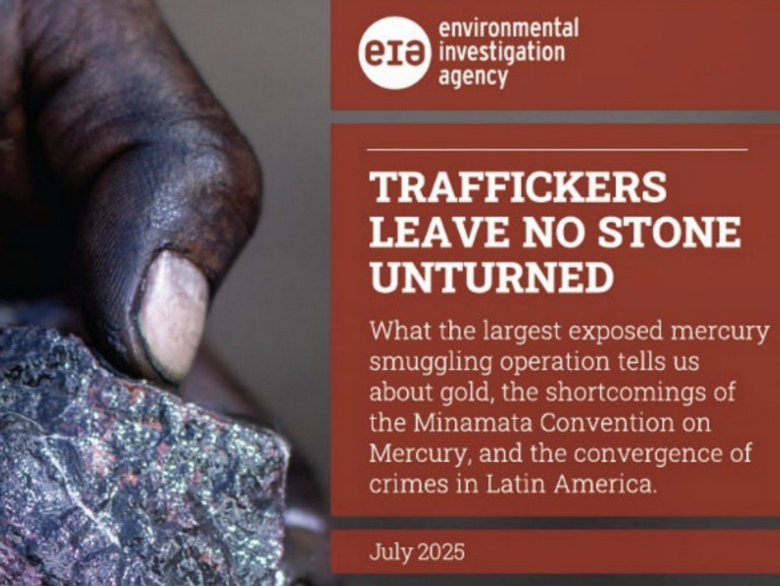A recent investigation by the Environmental Investigation Agency (EIA) has exposed a major smuggling operation linking Mexico’s Jalisco New Generation Cartel (CJNG) to the illegal mercury trade that fuels unregulated gold mining in the Amazon. According to the report, approximately 200 metric tons of mercury were illegally exported from Querétaro, Mexico, between April 2019 and June 2025. This mercury—a crucial input for artisanal gold extraction—was trafficked to Peru, Colombia, and Bolivia, enabling the production of illicit gold worth an estimated USD 8 billion at current prices. The report also alleges that several mercury-producing mines in Mexico are under CJNG control.
The EIA details how mercury is concealed in sacks of gravel and falsely declared as “construction materials” or “decorative stones” to bypass customs. In Peru, nearly half of the mercury ends up in the Madre de Dios region, where illegal mining operations consume 44 to 50 tons annually. In June, Peruvian customs (Sunat) intercepted nearly four tons of mercury bound for Bolivia—the largest seizure of its kind in the region to date. Julia Urrunaga, EIA’s Peru Director, stated that their investigation uncovered a smuggling network directly tied to CJNG, although the scale of illegal gold production in Peru suggests that additional trafficking networks may be operating under similar schemes.
This revelation is critically important as it underscores how transnational organized crime is directly enabling environmental destruction and fueling illegal economies in the Amazon. The trafficking of mercury not only violates the Minamata Convention, which bans its use in gold production—but also undermines governance, weakens border enforcement, and exacerbates health and ecological risks across South America. The report calls for urgent action from the governments of Mexico and Peru to reclaim control over mercury sources and enforce international environmental agreements to curb the region’s rapidly growing illegal gold economy.

